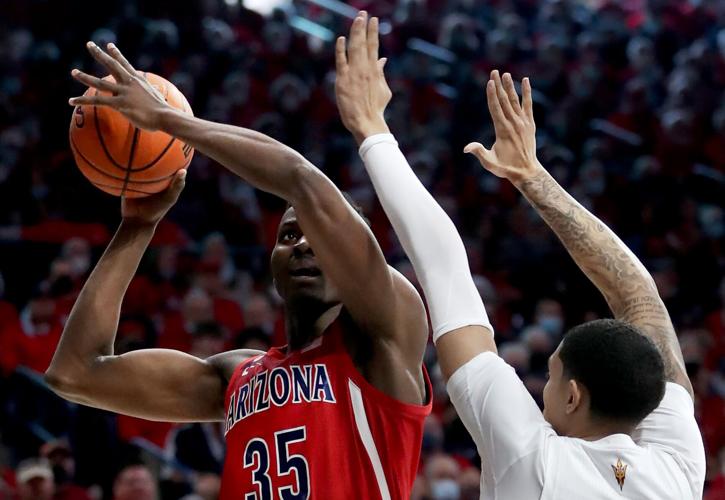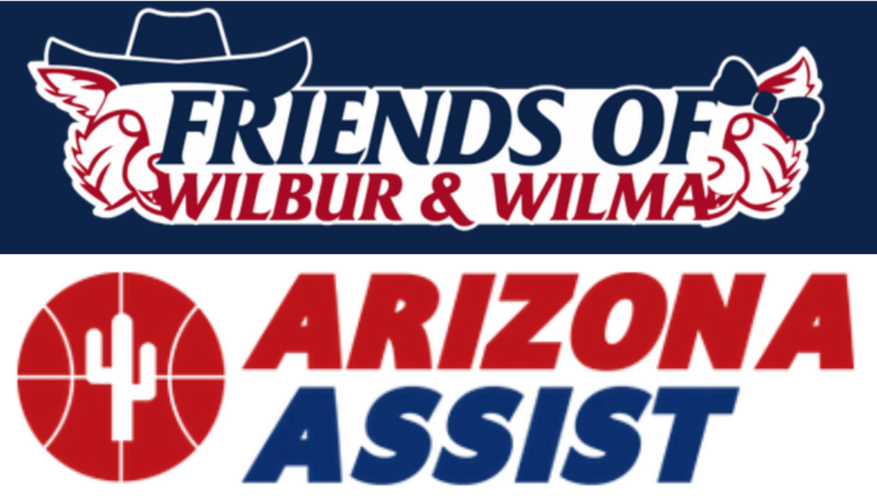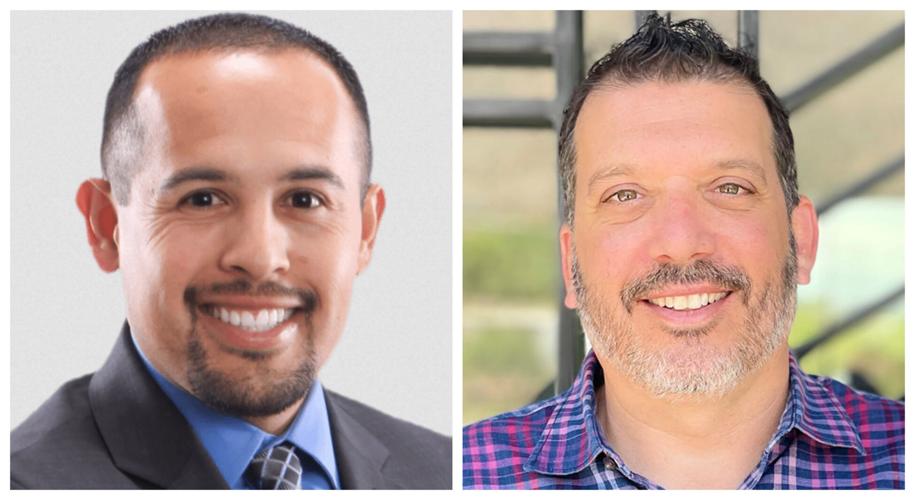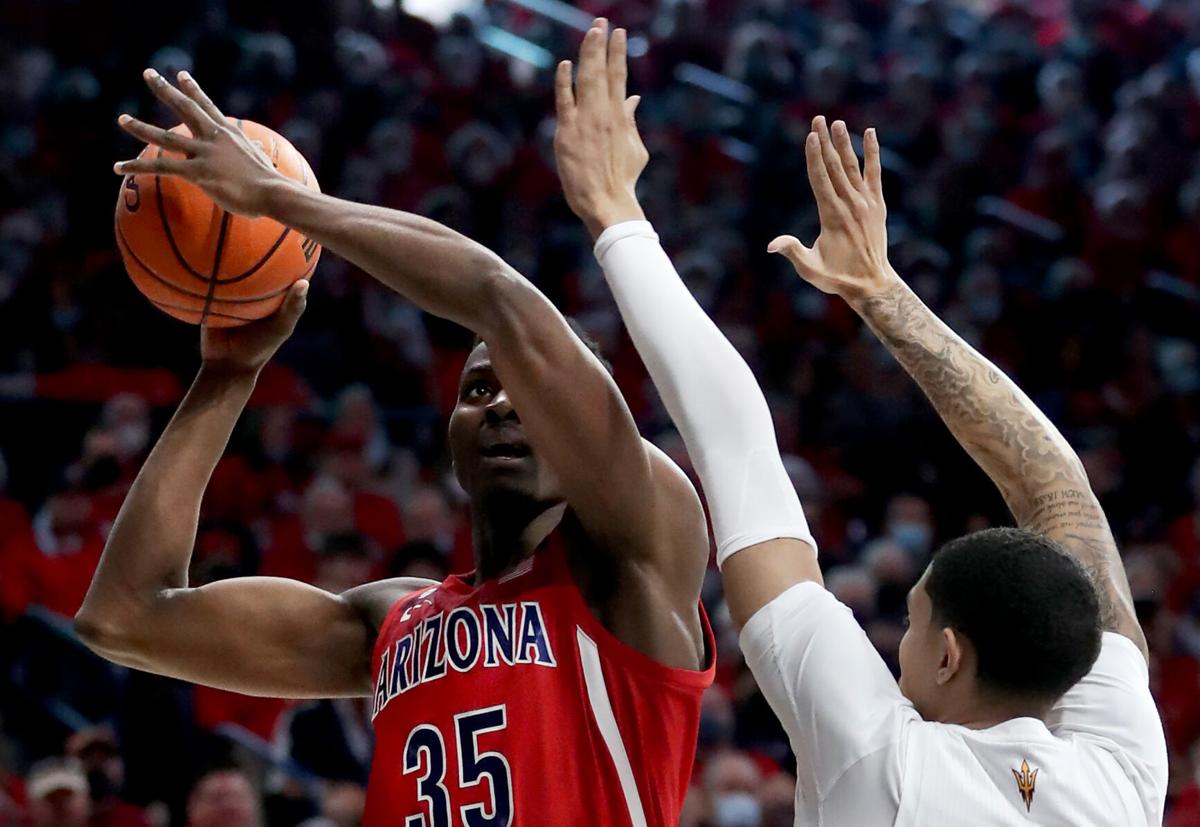Ten months after name, image and likeness deals began threatening to tear the fabric of college sports, the NCAA finally tried to put a foot down.
The embattled college sports organization stated last week that booster-funded NIL collectives cannot get involved in recruiting, saying it would review the most severe violations while also acknowledging that “more work must be done.”
Adam Lazarus and Joey Medina could see it coming.
The Tucson businessmen are running separate organizations intended to facilitate NIL opportunities for current University of Arizona athletes in a manner they say fits the spirit of the rules.
The Friends of Wilbur and Wilma is pooling booster funds to give to UA athletes of all sports who make personal appearances, the vast majority of them for charities. It also assisting businesses who want to hire the athletes.
Meanwhile, the Arizona Assist program is focused solely on men’s basketball, distributing money for players equally via membership dues while marketing merchandise that benefits the player whose name is on it.
“Now you’re starting to see all these all these articles about how now the NCAA is looking at putting a salary cap on this, and they’re going to start investigating this,” said Medina, general manager of Friends of Wilbur and Wilma. “We told ourselves and the public that, ‘Hey, when we do this, we’re gonna go best foot forward.’ We don’t want to have to pivot and come backwards and say, ‘I’m sorry, we screwed up.’”
Medina, a former UA football manager who runs a payroll management firm, said he wouldn’t have agreed to run the Friends of Wilbur and Wilma organization “if it’s done incorrectly.”
But elsewhere, the largely unregulated NIL deals keep spiraling.
Former Salpointe Catholic High School football player Bijan Robinson signed with a Lamborghini dealer near his college home at the University of Texas, while the agent for Miami basketball player Isaiah Wong threatened to have his client transfer if more NIL money was not produced — a statement Wong later backed off on.
And despite strict student visa rules that limit the work international students can do, Kentucky basketball star Oscar Tshiebwe has reportedly gained $2 million in NIL agreements for next season.
Considering that the UA men’s basketball program is comprised mostly of international athletes, that one particularly caught Lazarus’ eyes. He’s been running Arizona Assist along with two former college athletes, Michael Saffer and Thomas Conran.
“I am very aware of that situation and what’s going on University of Miami and Alabama and some of these schools,” Lazarus said. “I’m from the SEC. I went to University of Florida and I was friends a lot of football players. I mean, bad (stuff) has been going on for a long time, right? And this is the new evolution of it.
“It’s above board. But we wanted to be so above board that no matter what happens, it allows us to continue our business model and benefit the student-athletes and the fans.”
Both organizations operate independent of the UA. Their philosophies, however, mesh with what UA athletic director Dave Heeke has said about NIL opportunities.
“Many of these kids are getting so many benefits through education and plus-plus-plus, whether that’s food or other resources, which is good,” Heeke said. “But somehow we want to do ‘plus’ (NIL) on top of that. I know that we’ll do it the best we can. But we’ll also do it appropriately, and if student-athletes or prospects are in this just for the financial compensation, then so be it. They’ll have to make their own decisions. That’s not for us. This is not a bidding war. It’s not what we do.”
As it is now, UA athletes have the potential to earn at least four- or five-figure money on top of their scholarship packages, which now count stipends to reach the full cost of attendance and, starting in the fall, extra bonuses of $5,980 for every athlete who remains academically eligible.
Through Arizona Assist, UA men’s basketball players get about 80% of dues from membership fees that start at $100 while they can also earn about 80% of any revenue resulting from merchandise sold. The idea, Lazarus said, is to especially help players who aren’t headed for professional riches to capitalize on their short fame at UA.
“That’s what we like,” Lazarus said. “Not the idea of million-dollar Lamborghini deals and $20 million guarantees. That’s just not what we’re doing.”
The Friends of Wilbur and Wilma recently paid all UA football players who participated in a community autograph session enough for each player to take a trip home this summer, Medina said. At the approval of its advisory board, Friends also paid UA quarterback Jordan McCloud $1,500 to make a detailed charity appearance to help him with some family and other financial needs.
The payments, Medina said, were all “quid pro quo” at rates commensurable for the work performed.
“They can make $50,000 a year if they’re engaged, and they have the public’s eye,” Medina said. “We have some student-athletes that have 100,000-200,000 (Instagram) followers and they’re the ones that are that are being requested for appearance and social media posts. If they have that kind of following, it’s no different than the TikTok influencer.
“So that’s how we’re treating it. But the engagements we’re doing aren’t these, ‘Let’s sign an autograph, one football — then you hand it to somebody and all of a sudden you’re gonna get 20 grand.’ That’s not how we’re doing that.”

But what if some others might be, as the NCAA’s statement implied? How can Arizona stay competitive in recruiting?
“I think the type of kid that we get here is a little bit different,” Medina said. “Coming into the situation, they are not going to get million-dollar deals. But I think that they come here for a number of different reasons.”
Lazarus said he has never been asked by a recruit or his parents about what Arizona Assist can do if the player becomes a Wildcat, and said he’s made no promises to current players, either.
“We’re not going to do anything that’s gonna put us in any sort of weird predicament,” Lazarus said. “If the players we have agreements with say, ‘Well, what’s my guarantee?,’ the answer is zero. But if you promote it, you market it, you talk about it, and you give us more ideas … the more of that you do, the more and the more popular you are, the more will sell.”
But since most UA men’s basketball players are international, Arizona Assist has to be mindful of student visa regulations that largely prohibit employment. UA has advised its international athletes that “passive” income, when somebody else markets and does all the work, is OK — but paid appearances are not.
“Especially with the current roster and even next year’s roster, we don’t have a lot (of players) to choose from,” Lazarus said. “We can’t have these kids signing autographs, working or showing up at events in the way that we would like. We talked with a lot of international attorneys.”
UA men’s basketball players have the highest potential to earn from Arizona Assist’s membership fees, which allow fans to access special events and receive discounts on merchandise. Memberships start at $100, 80% of which is distributed equally to the team’s scholarship players.
Lazarus said some membership organizations elsewhere have models guaranteeing players $100,000 or more and, while he said he won’t go there, it isn’t difficult to see how that might be possible for a team with a rabid fan base.
Arizona Assists sold 100 memberships over its first three weeks, and Lazarus said he’s been encouraged by the way sales quickly increased in the past few weeks. If the organization can somehow reach 10,000 memberships over a year, Arizona Assist will bring in $1 million — with $800,000, after expenses, for the team to divide equally among its players. That amounts to about $67,000 per player on a team with 12 scholarship athletes.
At Friends of Wilbur and Wilma, Medina says the organization has already raised about $650,000 and dispersed about $250,000 to student-athletes.
Friends of Wilbur and Wilma allows fans to make a one-time contribution to its general fund or any particular sport, or seek assistance to hire an athlete. General donations allow the organization to pay athletes to appear for charities, so the appearances don’t cost the charity anything.

Joey Medina, left, is general manager of Friends of Wilbur and Wilma. Adam Lazarus, right, is a co-founder of Arizona Assist.
In the big picture, Lazarus said he’s hopeful that the income potential of NIL will eventually factor strongly into the stay-or-go-pro decisions many UA basketball players face in the offseason.
International players Bennedict Mathurin and Christian Koloko have already left UA for good this offseason, while rising junior guard Dalen Terry is testing the NBA Draft.
Terry has benefited from endorsements and merchandise sales since the NIL doors opened last July. But NBA Draft projections now suggest he can at least earn a two-way contract worth about $500,000 next season.
For now, the potential pro dollars likely outweigh another year of potential NIL dollars.
In the future, maybe not. Or at least the equation is a closer call.
“If you and I are talking hopefully in a year, and we do everything our way, maybe Koloko doesn’t jump as quickly,” Lazarus said. “If you have something in place that’s sustainable and measurable and real, I think these guys in the future might have might have a little bit of a hesitation because Tucson loves them.”
But even if NIL winds up helping keep players in college, and somehow is regulated out of recruiting, there’s always one problem for the schools themselves: Theoretically, at least, every booster dollar that gets funneled to players is one dollar less a booster might give an athletic department.
So far, Medina says the Friends of Wilbur and Wilma has been able to raise money in a way that doesn’t take away from Arizona’s athletic department, getting donors to “just step up that slight bit more” to create outside NIL opportunities while also supporting the school.
But will boosters keep stepping up more, if the NIL race demands them to?
“Our collectives have been managed very appropriately and effectively to help student-athletes in our programs, but I do believe the bigger conversation is that this is not sustainable,” Heeke said. “For us to continue to invest in operations, invest in our programs, invest in facilities, invest in retaining coaches and supporting all of our other programs — and structuring these large NIL collectives — it’s just not sustainable.
“At this point, we’re still getting great support from our people in a variety of areas, but a year of this will really test us.”
It’s an existential threat to athletic departments. But so is a talent base eroded by a lack of NIL opportunities.
And if either threat materializes, there could also be collateral damage.
“The biggest thing for us, honestly, is just creating community exposure,” Medina said. “I hate to say this, but if athletics fails, parts of the community start to fail. If there’s no fans in the stands to advertise to because we can’t deliver a great product, Tucson will still exist, but it just won’t be the thriving place that it is based on athletics.”







